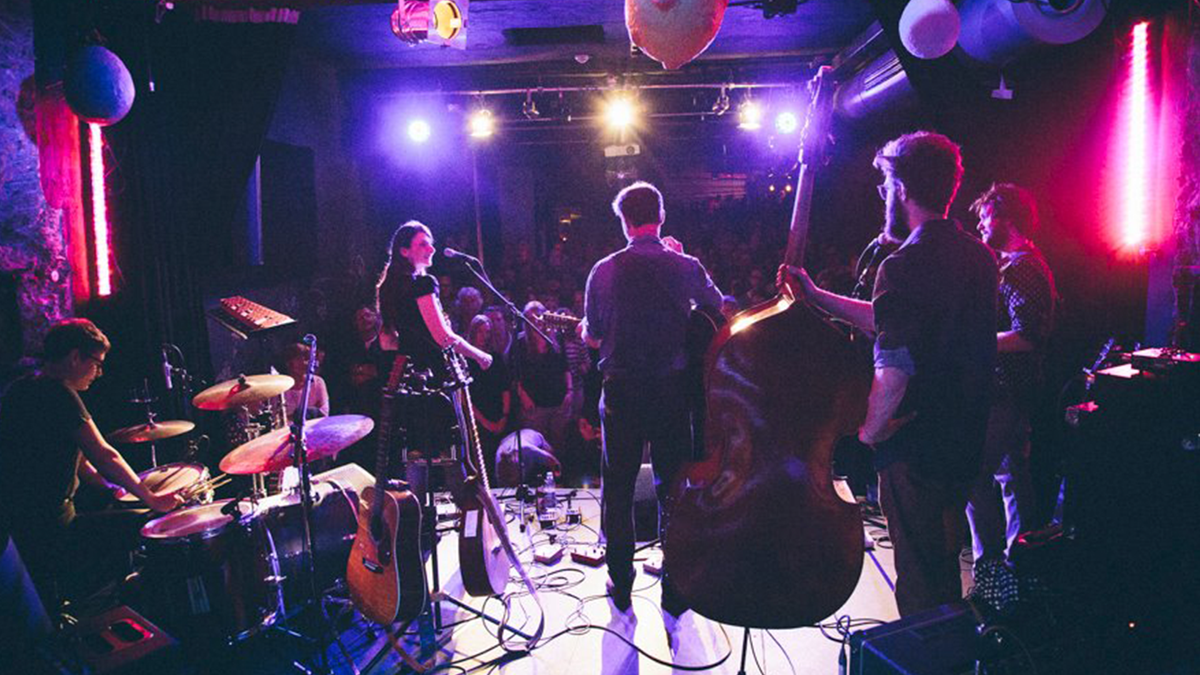
Keshavara
In the organizer's words:
Keshavara wear magnificent moustaches, bold headgear and speak an adventurous patois of English, Hindi, German and Gibberish. On their new album "III", the Cologne-based band led by German-Indian musician Keshav Purushotham create sounds the way other people mix drinks after they've already enjoyed three: Washed-out kraut-pop and diasporic dub-not-dub excursions are combined by eye and shaken wildly. Sugar-sweet meandering melodies, borrowed from a fantastic no man's land in the border region between exotic library compositions and psychedelic soundtracks, merge with the grooves of a rhythm section that would have felt right at home in the recording studios of funky Beirut in the mid-seventies. The result is cocktails topped with a surrealistic sugar rim with the effect of hallucinogenic Jell-O. Music that shimmers and flickers like a mirage in the desert. One moment Keshavara sound as if Ennio Morricone had set a Bollywood film to music, and the next like an Eden Ahbez song produced by Curt Boettcher, or - not quite as spinous but no less fantastic - as if Khruangbin and Sven Wunder had finally recorded an album together. In the most brilliant moments, it all comes together as if by magic, culminating in songs like "Spiegelmann" and "Tableau Vivant" - phantasmagoric parties full of transcultural clashes that invite us listeners to transform them into colorful group choreographies.
While Keshavara's debut was still a solo album and the follow-up "Kabinett der Phantasie" was essentially a duo album, Keshav Purushotham, Niklas Schneider, Benedikt Filleböck and Christopher Martin have finally grown together into a four-piece band with their self-produced third album, simply titled "III" ... around an old Farfisa organ that landed in the rehearsal room as a gift one day: A UFO, sometimes more, sometimes less present on all the songs, from a time of slow jams, live takes and excessive use of space echo. Its analog bubbling and wafting funk rolls out the red carpet for the warm, organic band sound and gives it a gentle nudge towards the 70s. Refreshingly, it never really gets there, but always remains in flux. Because the actual destination of the reverb-soaked corridors of this album is always the path, or rather the artfully carpentered wooden path, the fantastic wrong turn. "III" is a journey on which times and places are not fixed points, but interchangeable coordinates in a tongue-in-cheek puzzle. So it is only logical to sing about "Indian gods in Sauerland". The fact that, despite the nostalgia that blows through all nine songs like a warm Mediterranean breeze, sentimentality never arises is not least due to this humor.
The ethereal drones, gently mumbling chords and ghostly, sighing swathes of sound that keyboardist Benedikt Filleböck elicits from his decrepit Farfisa, especially in the album's quieter moments and instrumental numbers, form an atmospheric contrast to the other two pillars of the Keshavara sound: Christopher Martin's light-footed, bouncing bass triangles and Keshav's sun-drenched guitar ornaments. In combination with Niklas Schneider's crisp drum beats, a foundation is created with which the kaleidoscopic textures and melodies merge completely.
The result is the quartet's most homogenous album to date. With "III", Keshavara prove themselves to be shrewd sound alchemists and world wanderers, a soft power whose strength is fed by their enormous musicality, their love of storytelling and their surrealistic wit.
Location
You might enjoy this as well?

























Gemeinsam Events erleben
Events werden noch schöner wenn wir sie teilen! Deshalb kannst du dich jetzt mit Friends und anderen Usern vernetzen um Events gemeinsam zu besuchen. Loslegen